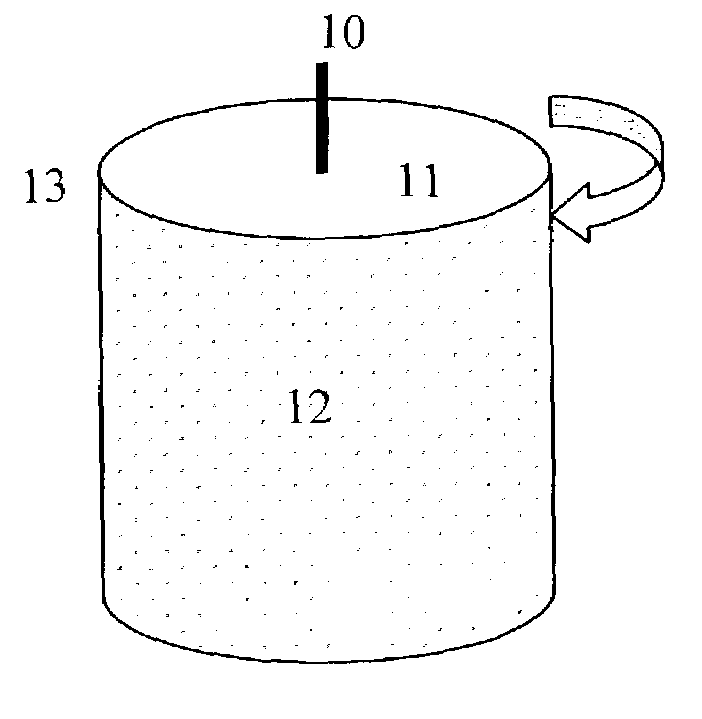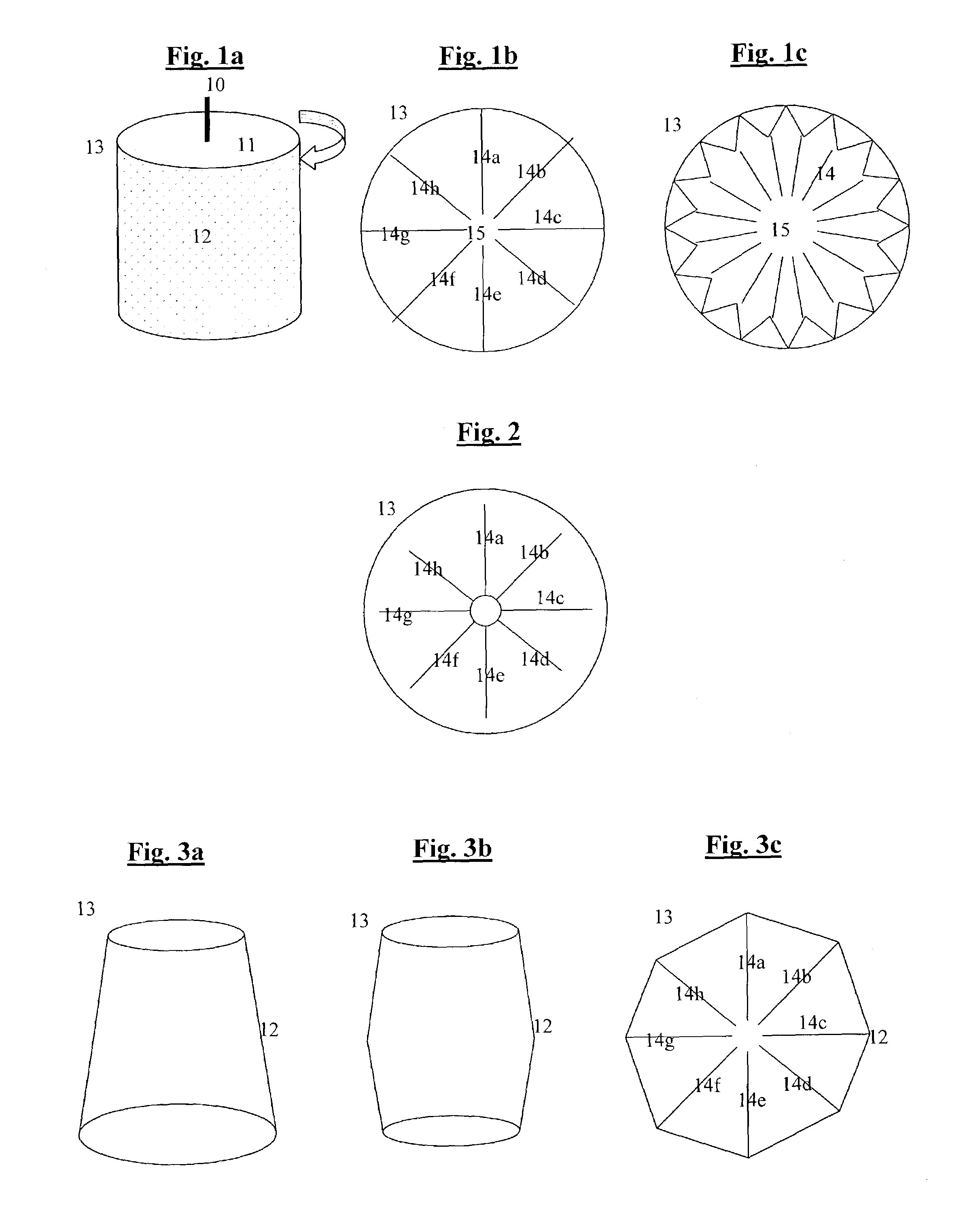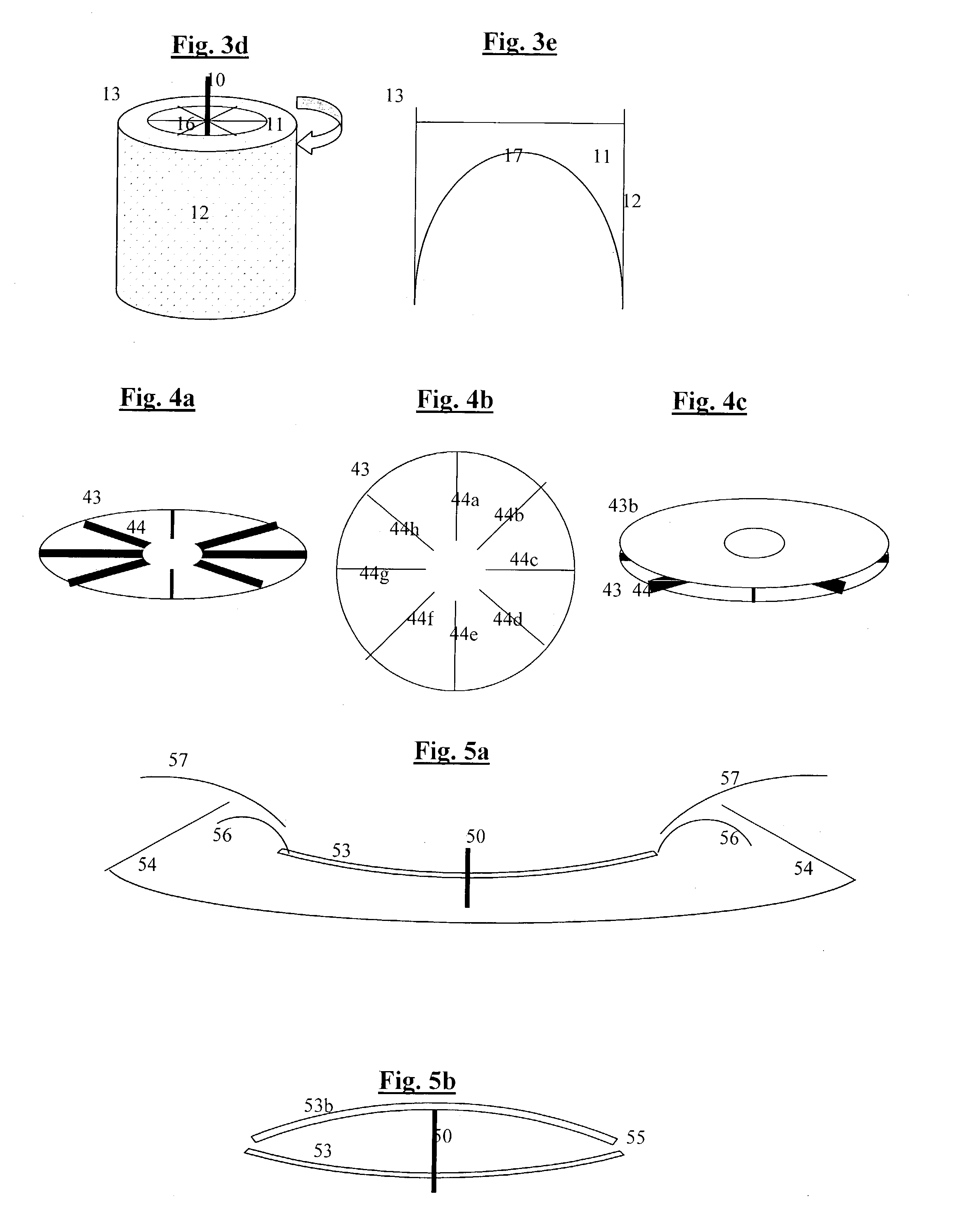System and method for efficient and low energy desalination of water
a technology of water desalination system and low energy, applied in the field of desalination of water, can solve the problems of more waste of energy and high construction cost of such conduits, and achieve the effects of less mechanical problems, easy cleaning, and less waste of energy
- Summary
- Abstract
- Description
- Claims
- Application Information
AI Technical Summary
Benefits of technology
Problems solved by technology
Method used
Image
Examples
Embodiment Construction
[0032]All of the descriptions in this and other sections are intended to be illustrative examples and not limiting.
[0033]Referring to FIGS. 1a–b, we show illustrations of a side-view and top-view of a preferable embodiment of a cylinder (13) containing water(11), with preferably small holes on its external walls (12), which is rotated at high speeds around a preferably vertical axis (10), thus throwing out water droplets by centrifugal forces. Preferably, the cylinder is divided by vertical walls (depicted in this example as 14a–14h, but of course any convenient number of walls & cells can be used) into a number of cells, in order to better rotate the water and reduce internal circulations of the water (11), which would be a waste of energy. The cells can be for example wider at the circumference, as shown in FIG. 1b, or for example narrower as they reach the edges of the cylinder, as shown in FIG. 1c. Preferably, at the center of the cylinder there is an area of water free of inter...
PUM
| Property | Measurement | Unit |
|---|---|---|
| speed | aaaaa | aaaaa |
| droplet size | aaaaa | aaaaa |
| sonic speeds | aaaaa | aaaaa |
Abstract
Description
Claims
Application Information
 Login to View More
Login to View More - R&D
- Intellectual Property
- Life Sciences
- Materials
- Tech Scout
- Unparalleled Data Quality
- Higher Quality Content
- 60% Fewer Hallucinations
Browse by: Latest US Patents, China's latest patents, Technical Efficacy Thesaurus, Application Domain, Technology Topic, Popular Technical Reports.
© 2025 PatSnap. All rights reserved.Legal|Privacy policy|Modern Slavery Act Transparency Statement|Sitemap|About US| Contact US: help@patsnap.com



